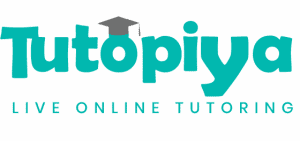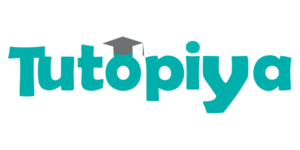- Here are some things you need to consider before choosing the right secondary school for your child - Sec 2 Streaming Exercise, the IP and more!
How to Choose the Right Secondary School After PSLE
Your child is now graduating from their primary education and moving to their secondary education. Your child has not only grown academically but physically and mentally too. The next 4 to 5 years for your child is also crucial to continue building their character and personality. This stage is also when your child starts to explore what they will be interested in studying in the future. Therefore, it is important when it comes to choosing the right secondary school for your child.
Tutopiya has compiled top tips and factors to consider when it comes to choosing their secondary school. Keep reading to find out more! You can also find a summarised infographic at the end of the blog article.
1 – Understanding your child’s strengths, learning styles and habits
Your child is older now and old enough to make certain calls for themselves and their future. Take time to listen to what they want before offering advice and help from a parent’s perspective.
The next 4 to 5 years is crucial not only for building stronger values and morals in your child but also a crucial period for them to explore their interests and learn more about themselves.
Besides focusing on their academic results, talk to your child about their interests and aspirations. Help your child to find out what they are good at and what type of activities they enjoy and take pride in doing.
This will help both you and your child to make more informed choices about the secondary school they wish to enter to develop their character and interests.
-
Direct School Admission (DSA)
Direct School Admission, also known as DSA, is a program in Singapore introduced to students who are studying primary 6 or secondary 4 to be guaranteed admission into a secondary school or junior college respectively. Students apply for DSA based on their talent in sports, CCAs and specific academic areas before taking the PSLE.
Students can apply for DSA based on a wide range of talents including:
- Sports and games
- Visual, literacy and performing arts
- Debate and public speaking
- Science, mathematics and engineering
- Languages and humanities
- Uniformed groups
- Leadership (for example, prefects)
(Source: Beta Ministry of Education. (n.d.). from https://beta.moe.gov.sg/secondary/dsa/)
2 – Awareness of the PSLE cut off points for previous years
From January 2021, the PSLE scoring system will be altered so this point may not be as useful to the 2021 P6 students but it is still important for future students and parents when it comes to deciding the right secondary school. (Read: New PSLE Scoring System: What are the changes?)
The reason why awareness of the cut off points of previous years is so important is because their current standard will be able to serve as a guide of your likelihood of getting into these schools.
3 – Consider The Distance from Home When Choosing A Secondary School
This is one of the main points when it comes to choosing a school for primary students entering Primary schools. However, it is not so much of a focal point when it comes to choosing for Secondary schools since your child is much older now to be able to travel on their own.
However, this factor still plays a role in choosing the right secondary school, as ultimately, time is precious. The number of hours that your child will spend in secondary school will be much longer than in primary school. So, be sure that travelling does not tire your child out!
4 – Affiliation to Tertiary Educations – Junior College (JC)
Choosing the right secondary school may also help your child greatly if they choose to continue their tertiary education by going to a Junior College.
Secondary schools that have an affiliation to Junior Colleges allow students to get 2 bonus points during their school application. This however is provided that students indicate the affiliated junior college as their 1st or 2nd choice during the Joint Admission Exercise to be eligible.
5 – What does the Secondary School offer your child (Subject Combinations*)?
Each secondary school upholds different values, so be sure to look at the schools holistically, such as the environment, programmes offered, CCAs available, the culture, etc.
Additionally, your child will go through an important phase during their secondary school years. This is the Secondary 2 Streaming exercise where students will choose their subject combination for Secondary 3 and ultimately, the subjects they will be sitting for their O Levels Examinations at the end of Secondary 4.
It is important to look at what subjects the school can provide. Not all secondary schools offer triple pure science (Chemistry, Physics and Biology) and specific pure humanities such as Pure Geography and Pure History. Therefore it is important to look into these specifications before enrolling your child into the secondary school.
Options Post Secondary School To Plan Ahead
One tip Tutopiya can offer here is to look ahead. Dive a bit deeper into researching for a specific course in polytechnics or subject combinations for junior colleges that your child may be interested in taking after their O Levels. This will serve as a guide for what subject combinations your child can choose and excel before their streaming year in secondary 2.
-
Polytechnic
For Polytechnic, students have to obtain minimum B3/4 (some Polys allow up to C6) for relevant subjects in O Levels.

(Source: Singapore Polytechnic – Course Entry Requirements for Engineering with Business)
As compared to Junior Colleges, it is not as strict as needing to score straight As or Bs to enrol into a course in Polytechnic. However, there is still a cut-off point for the courses in polytechnic that you and your child have to take note of.
Additionally, even polytechnics require students to pass their English, some courses accepting only C5 and above and more lenient courses allow minimum D7 for entry. However, as long as a student fails their English, they are not allowed to apply for polytechnic or junior college.
-
Junior College

(Source: Eunoia Junior College – Subject Combination)
For JC, students have to obtain minimum B3 for Pure subjects, A1 for Combined subjects to be able to take up H2 subjects in Junior College. (This is not the same for all Junior Colleges, you will have to search up on the Junior College’s requirements, this is for example purposes.)
(Read: H1, H2 and H3 for A-Levels explained.)
The Secondary 2 Streaming exercise is so much more important than you think, it can change your future education paths greatly if not thought out well enough. Entering the right secondary school will provide the right subject combinations for your child. (Read: How taking Combined Science Almost Ruined My Future)
6 – Integrated Programme
The Integrated Programme, as many Singaporeans may know it as “Bullet-Train”, is a 6 years course that leads students up to the GCE A-Levels. This programme allows high-performing students to skip the GCE O-Level and sit for only the GCE A-Levels at the end of their 6th year in IP school.
The purpose of the Integrated Programme is to allow students to have more time allocated to their enrichment activities. Since without GCE O-Levels, students will have more time to immerse themselves in other enrichment programmes and more broad-based education.
Some of the schools that currently offer the Integrated Programme are as follows:
| Year 1 through Year 4 | Junior college partner for JC1 and JC2 |
| Catholic High School | Eunoia Junior College |
| CHIJ St. Nicholas Girls’ School | Eunoia Junior College |
| Singapore Chinese Girls’ School | Eunoia Junior College |
| Nanyang Girls’ High School | Hwa Chong Institution |
| Hwa Chong Institution (Secondary) | Hwa Chong Institution |
| Raffles Girls’ School | Raffles Institution |
| Raffles Institution (Secondary) | Raffles Institution |
| Victoria School | Victoria Junior College |
| Cedar Girls’ Secondary School | Victoria Junior College |
| Dunman High School | 6-year programme |
| National Junior College | 6-year programme |
| River Valley High School | 6-year programme |
| Temasek Junior College | 6-year programme |
7 – Staying in the Know
The Ministry of Education has a series of steps that are provided on their official website to show the process of the Secondary 1 posting. You can refer to this link to find out more about the application process – https://beta.moe.gov.sg/secondary/s1-posting/
Summarised infographic on the points mentioned above: Choosing the Right Secondary School For Your Child

All these can be overwhelming and daunting to digest at one go, but it is still most important to ensure that your child is able to grow healthily in the school environment. They are going to remember their secondary school days vividly for the rest of their lives!
Preparing for Secondary School
Tutopiya is a Live Online 1-1 Tutoring Platform based in Singapore which specialises in Tuition for students aged 6 to 18.
Tutopiya provides experienced and specialist, trained & screened Singaporean Tutors for secondary 1-4 students for all streams and all subjects.
Learn multiple subjects in the comfort of your own home!
Every lesson is personalised to target each student’s exact needs.
Tutopiya also offers a FREE 1-1 Trial lesson on any subject of your choice for all new students! Come experience online learning with Tutopiya today!

Eleen Tan
I am currently a full-time student studying at a local university in Singapore while freelancing as a writer. I enjoy writing and sharing useful education-related tips with my fellow studying peers. During my leisure time, I enjoy doing creative arts and volunteering work. I am passionate about sharing my experience as a student! ☺






